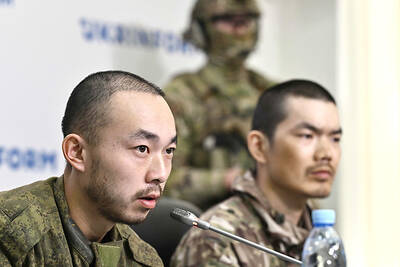The message, very often, is sent with bloodshed.
A suicide bombing last week on a fortified Kandahar guesthouse shared by Western contracting companies killed four Afghans and injured several Americans. An Afghan engineer was shot dead in March as he helped inspect last month not far from the Pakistan border. An Afghan woman who worked for a US-based consulting firm was shot by motorbike-riding gunmen as she headed home in this southern city.
Attacks on US contractors, construction companies and aid organizations have been rising just as the US pushes faster development of Afghanistan, one of the world’s poorest countries, as a priority in its strategy to counter the insurgency.
The number of contractor attacks is elusive since the workers are from many countries and work for a number of different organizations, but the toll has jumped precipitously since US President Barack Obama launched a massive troop surge in December.
Of the 289 civilians working for US contractors killed between the start of the Afghanistan war in late 2001 and the end of last year, 100 died in just the last six months of last year, a report by the US Congressional Research Service showed.
To a degree, those killings have mirrored an increase in US service member deaths, which roughly doubled in the first three months of this year compared with the same period last year.
Many of the recent attacks against civilian contractors have been around Kandahar, the one-time Taliban capital where the US is poised to launch a major operation in the coming weeks, but violence against contractors has spiked across Afghanistan.
“The insurgents are trying to say: ‘You can’t do it,’” US General Stanley McChrystal said in a speech last week in Paris, shortly after two bombings shook Kandahar. “I think we’ll see that for months as they make an effort to stop progress, but I don’t think that they’ll be successful.”
In some ways, though, they already have been successful.
Contractors say they are staying in the country, but they have been forced to retreat even further behind blast walls and heavily armed security perimeters. The security drives up costs, making interaction with regular Afghans harder and slowing reconstruction projects.
“We have become the targets of the Taliban,” said Azizullah, the owner of a construction company that builds bridges and irrigation projects in the southern provinces of Kandahar and Helmand, insurgent strongholds. “If we travel, they try to kidnap us and hold us for huge ransoms. If we don’t pay, they kill us,” said Azizullah, who like many Afghans has only one name.

Incumbent Ecuadoran President Daniel Noboa on Sunday claimed a runaway victory in the nation’s presidential election, after voters endorsed the young leader’s “iron fist” approach to rampant cartel violence. With more than 90 percent of the votes counted, the National Election Council said Noboa had an unassailable 12-point lead over his leftist rival Luisa Gonzalez. Official results showed Noboa with 56 percent of the vote, against Gonzalez’s 44 percent — a far bigger winning margin than expected after a virtual tie in the first round. Speaking to jubilant supporters in his hometown of Olon, the 37-year-old president claimed a “historic victory.” “A huge hug

Two Belgian teenagers on Tuesday were charged with wildlife piracy after they were found with thousands of ants packed in test tubes in what Kenyan authorities said was part of a trend in trafficking smaller and lesser-known species. Lornoy David and Seppe Lodewijckx, two 19-year-olds who were arrested on April 5 with 5,000 ants at a guest house, appeared distraught during their appearance before a magistrate in Nairobi and were comforted in the courtroom by relatives. They told the magistrate that they were collecting the ants for fun and did not know that it was illegal. In a separate criminal case, Kenyan Dennis

A judge in Bangladesh issued an arrest warrant for the British member of parliament and former British economic secretary to the treasury Tulip Siddiq, who is a niece of former Bangladeshi prime minister Sheikh Hasina, who was ousted in August last year in a mass uprising that ended her 15-year rule. The Bangladeshi Anti-Corruption Commission has been investigating allegations against Siddiq that she and her family members, including Hasina, illegally received land in a state-owned township project near Dhaka, the capital. Senior Special Judge of Dhaka Metropolitan Zakir Hossain passed the order on Sunday, after considering charges in three separate cases filed

APPORTIONING BLAME: The US president said that there were ‘millions of people dead because of three people’ — Vladimir Putin, Joe Biden and Volodymyr Zelenskiy US President Donald Trump on Monday resumed his attempts to blame Ukrainian President Volodymyr Zelenskiy for Russia’s invasion, falsely accusing him of responsibility for “millions” of deaths. Trump — who had a blazing public row in the Oval Office with Zelenskiy six weeks ago — said the Ukranian shared the blame with Russian President Vladimir Putin, who ordered the February 2022 invasion, and then-US president Joe Biden. Trump told reporters that there were “millions of people dead because of three people.” “Let’s say Putin No. 1, but let’s say Biden, who had no idea what the hell he was doing, No. 2, and